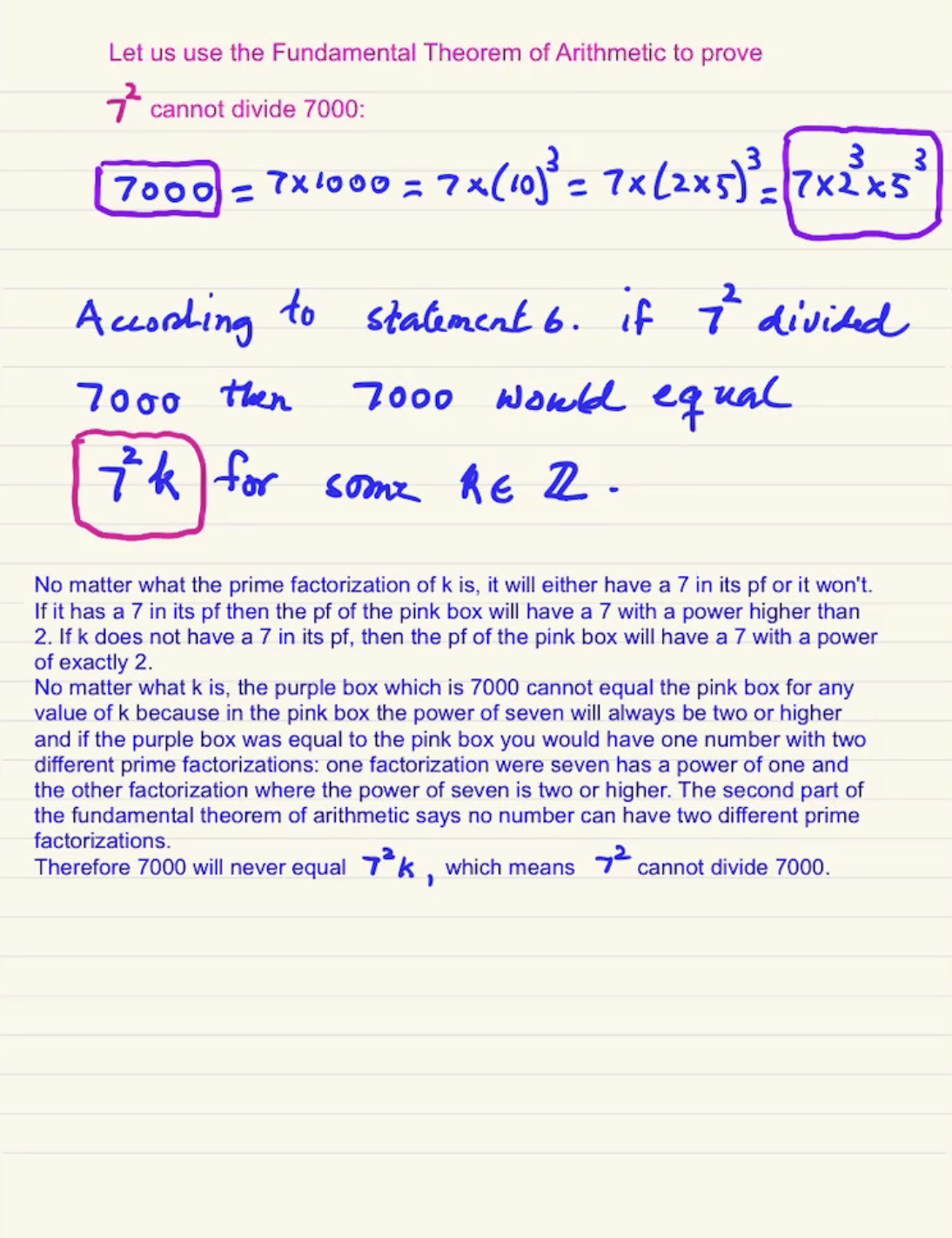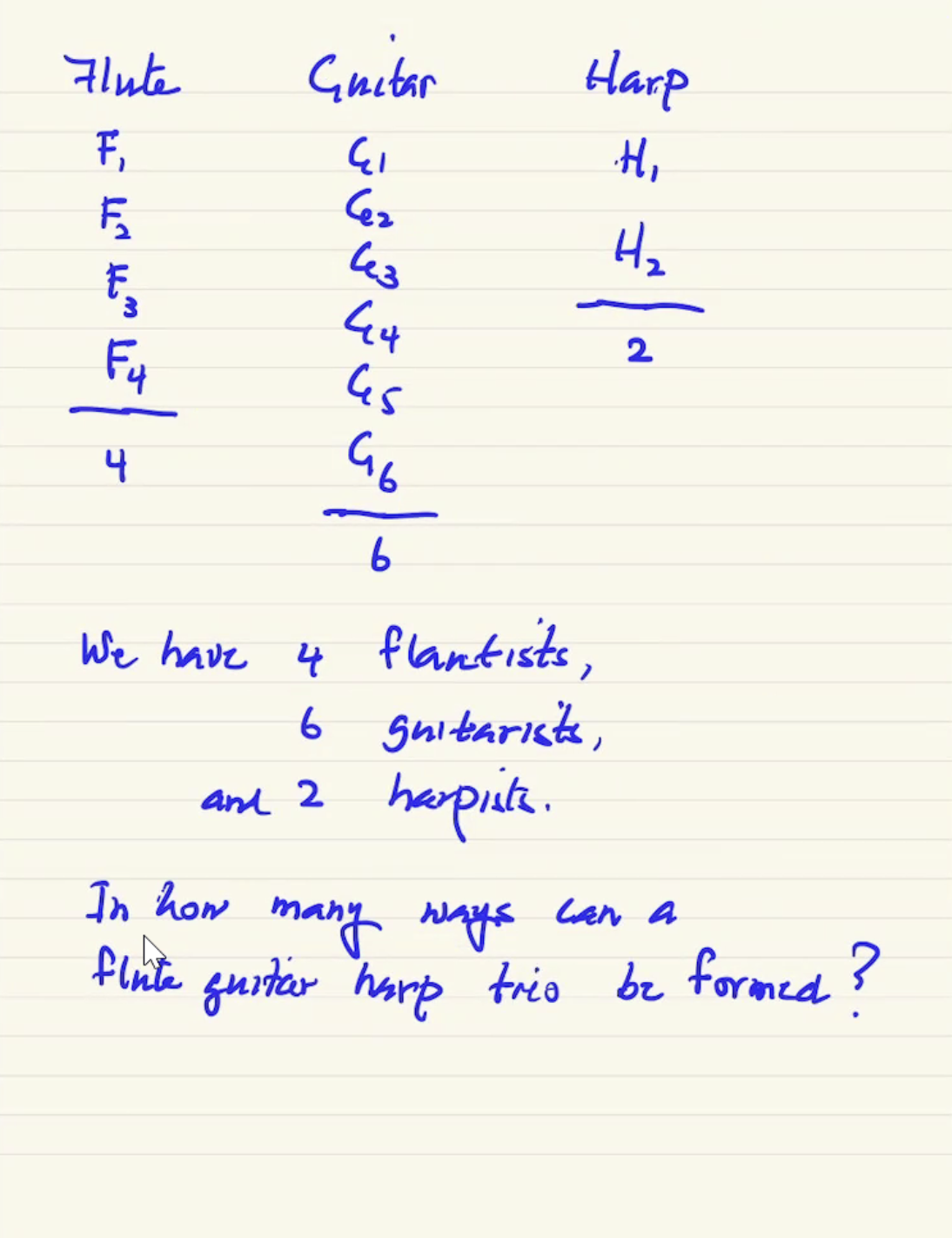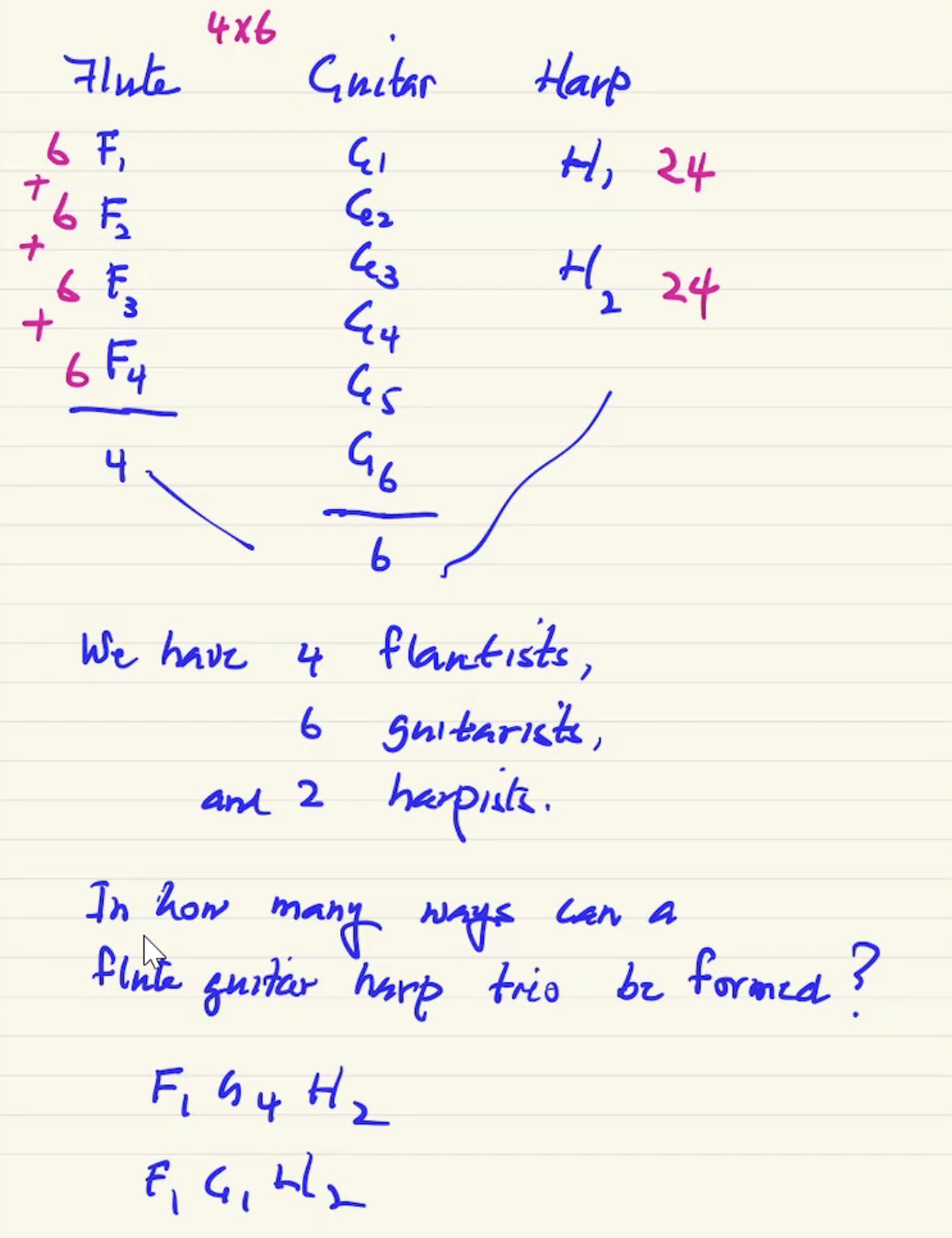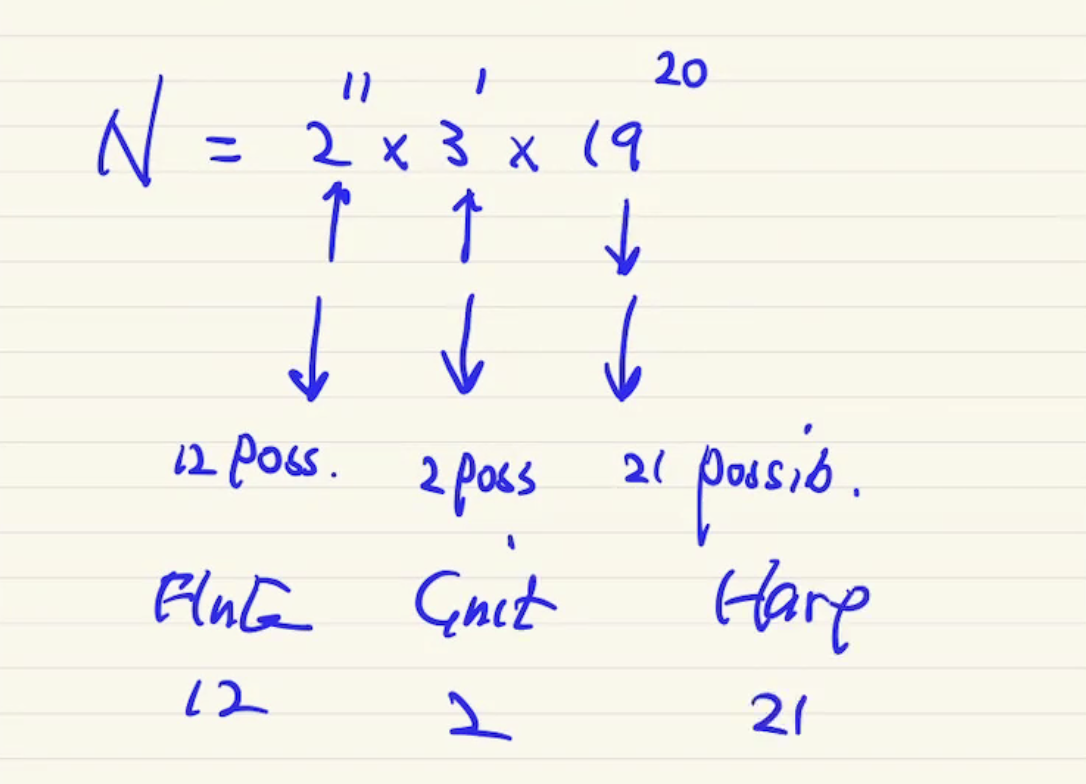Divisibility cont. #

There are many ways to represent 24, but there is only 1 way to represent it as a product of primes.
Theorem. Whenever we add a number to itself, the sum will be even.
Proof. Let first number be \( k \) , let the second number be \( k \) . So if \[\begin{aligned} k + k = 2k \end{aligned}\] and \( 2 | 2k \)\( \square \)
Example
Proof. \( 10 | a \) so \( a = 10k_1 \) , \( 10 | b \) so \( b = 10k_2 \) , where \( k_1, k_2 \) are unknown \( \in \mathbb{Z} \) . \[\begin{aligned} ma \pm nb &= m (10k_1) \pm n (10 k_2) \\ &= 10(m k_1 \pm n k_2) \end{aligned}\]Note that \( (m k_1 \pm n k_2) \in \mathbb{Z} \) .
\( \square \)
Example
For example: \( 7 \not | 13 \) , \( 7 \not | 15 \) , but \( 7 | (13 + 15) \) .
For example: \( 7 \not | 15 \) , \( 7 \not | 16 \) , and \( 7 \not | (15 + 16) \) .
Example
Proof. \( 7 | a \) so \( \frac{a}{7} \) is a whole number. \( 7 \not | b \) so \( \frac{b}{7} \) is not a whole number.So \( \frac{a}{7} + \frac{b}{7} \) is not whole. Therefore, \( \frac{a + b}{7} \) is not a whole number.
So, by statement 5: \( 7 \not | a + b \) .
\( \square \)
Nmemonics for divisibility #
So, based on the examples above:
- IS + IS = IS
- IS + IS NOT = IS NOT
- IS NOT + IS NOT = IS or IS NOT
Example
By the fundamental theory of arithmetic, each number only has 1 pf, therefore these number cannot equal each other.
Can \( 2^6 | 2^5\) ? No, because \( \frac{2^5}{2^6} = \frac{1}{2} \) , which is not a whole number.
Example
Proof. Numbers that are divisible by \( 5^3 \) are of the form \( 5^3k \) .There are two cases:
- \( k \) contains a power of 5, therefore the power of \( 5^3k \) will be greater than 3.
- \( k \) does not contain a power of 5, therefore the power of \( 5^3k \) is 3.
Both of these scenarios have too many 5s to go into numbers with a \( 5^2 \) in their prime factorization.
\( \square \)
Amount of divisors #
If \( N = 2^{11} \cdot 3 \cdot 19^{20} \) . We can multiply the exponents (+ 1) together to get the total amount of divisors: \( (11 + 1) (1 + 1) (20 + 1) = 25 \) .


- the multiplication principle
